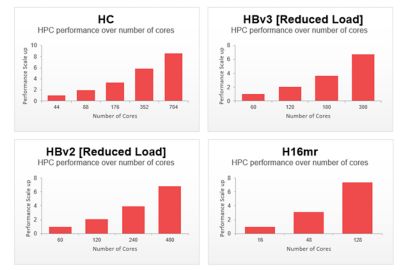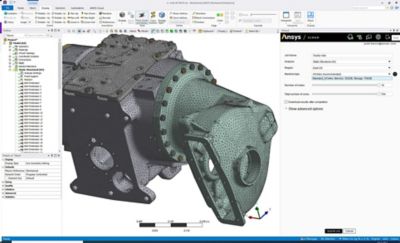-
-
Kostenlose Software für Studierende
Ansys unterstützt die nächste Generation von Ingenieur*innen
Studenten erhalten kostenlosen Zugang zu erstklassiger Simulationssoftware.
-
Verbinden Sie sich jetzt mit Ansys!
Gestalten Sie Ihre Zukunft
Stellen Sie eine Verbindung mit Ansys her, um zu erfahren, wie Simulation Ihren nächsten Durchbruch vorantreiben kann.
Länder und Regionen
Kostenlose Demoversionen
Produkte & Dienstleistungen
Lernportal
Über das Unternehmen
Back
Produkte & Dienstleistungen
Back
Lernportal
Ansys unterstützt die nächste Generation von Ingenieur*innen
Studenten erhalten kostenlosen Zugang zu erstklassiger Simulationssoftware.
Back
Über das Unternehmen
Gestalten Sie Ihre Zukunft
Stellen Sie eine Verbindung mit Ansys her, um zu erfahren, wie Simulation Ihren nächsten Durchbruch vorantreiben kann.
Kostenlose Demoversionen
ANSYS BLOG
November 18, 2021
Want to Squeeze Your Simulation Cycle Time with Ansys Cloud?
With new industry trends such as electrification, digitalization, and Industry 4.0, engineers are forced to innovate and bring products to market at a much faster pace. You can no longer depend on old product development processes or multiple physical testing and prototype cycles. As a result, you may be focusing more on simulation and analysis led design approaches.
However, computer-aided engineering (CAE) can present its own challenges for engineers and engineering managers. You might wonder how you can access the necessary computing resources to enable a small team of simulation specialists to complete more simulation runs quickly and within budget. That may seem like a dream, but Ansys Mechanical simulations on Ansys Cloud can make these goals a reality.
Unlimited Hardware Resources
Ansys Cloud offerings provide access to unlimited hardware resources with multiple configurations and thousands of CPUs without upfront investment in expensive hardware resources. That not only lets you to access the computing power you need, but it reduces your liability and enables you to focus on engineering instead of hardware maintenance.
Performance of Simulation Teams
Mechanical is highly scalable with high-performance computing (HPC) licenses on Ansys Cloud. One of our benchmarks suggests 10X scaling between 44 cores and 700 cores and 37X scaling between 16 cores and 700 cores. This enables a significant increase of software utilization and speed, which reduces the overall cost of simulation. This speed also helps users to drive design at faster pace. Ansys Mechanical on Ansys Cloud makes many simulation workflows possible that are not possible with limited hardware resources.

The 2020 Release 2 vs. the 2021 Release 2 of the Ansys Mechanical direct solver shows strong scale up for a 16 million degrees of freedom, highly nonlinear problem.
Seamless Integration Between Ansys Mechanical and Ansys Cloud
Mechanical users can perform pre- or post-processing on their workstation or laptop and submit jobs on Ansys Cloud using hundreds of CPUs available on different hardware configurations from one of nine worldwide datacenters.
Lightweight post processing and solution/result tracking is available on Ansys Cloud while the simulation is solving. Ansys Mechanical users can even upload an Ansys Workbench archive, along with a solver deck to perform post processing on Ansys Cloud after the solution is done to avoid a large data transfer.

Ansys Cloud is directly integrated into the Ansys Mechanical graphical user interface.
In-Browser Interactive Virtual Desktop Session
You can also handle a complex multiphysics Ansys Mechanical simulation workflow on an Ansys Cloud virtual desktop infrastructure (VDI) session. You can perform pre- and post-processing as well as solve on Cloud with an in-browser interactive VDI session to avoid dependency on your local workstation or laptop, and avoid back-and-forth with large simulation data.
Dedicated Support
The Ansys Cloud workflow provides many possibilities. There are so many possibilities in terms of hardware cores and virtual machine type that it’s legit to wonder if you could be lost in this ocean of possibilities. The answer is no because Ansys has invested a lot of time running many benchmarks and identifying the best matching configurations for each solver. For Ansys Mechanical, we identified an “HC” virtual machine and HBv3 (120 or 96 cores) as the top performers and best cost/performance ratio, respectively.
Our customers can benefit from the latest recommendations on a dedicated forum and in a recent white paper, so you always know how to optimize your jobs directly based on our observation and don’t need to spend time redoing the benchmarks. Because we are partnering with Microsoft Azure, it ensures you have a high level of security and certifications. Ansys Cloud is SOC2 compliant, for example. Finally, Microsoft refreshes hardware often, so many customers see increased performance at the same price.

You can select the number of cores you want and where you want to send the HPC batch solve
Save Time and Money with Ansys Cloud
We recently released a total cost of ownership analysis based on two real customer case studies. In both cases, they show that migrating from an on-prem cluster to a workload on the cloud is significant in terms of benefits and saving. If you choose to use our Elastic Licensing model, you don’t even have to bring your own license, but you can pay only for what you are using.
To learn more about what Ansys and Microsoft are doing together, request the on-demand webinar: Accelerating Ansys Mechanical with Ansys Cloud.